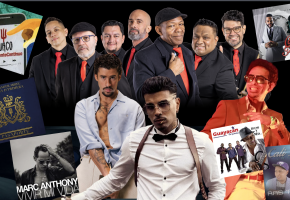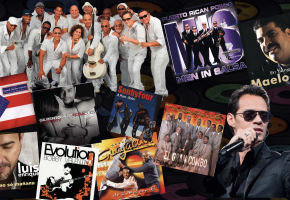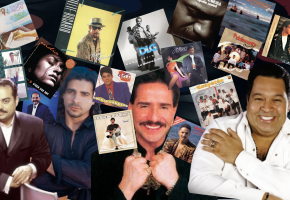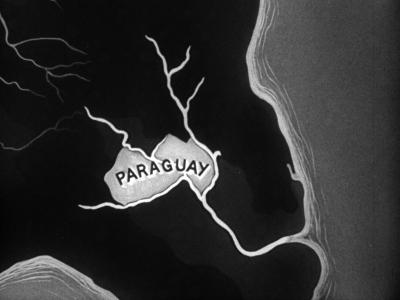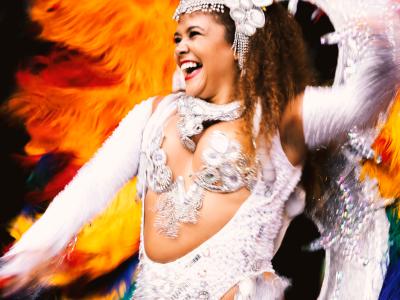Born in Magangué, Bolívar, in the very heart of the Colombian campo Rodolfo moved to Medellín at 15, where he began singing boleros with "El Sexteto Miramar." His first recording was in 1966 with Club del Clan singing "Bellos Recuerdos" on the Sonolux label. In 1967 he was signed by Disco Fuentes which released his first album in 1969 "Rodolfo y el sexteto Miramar" with songs like El Triunfador and El de siempre.
The Medellin label, which was to become a powerhouse of Latin music, became instrumental to his success. But, from the very beginning Rodolfo’s star quality was clear, and soon after his signing he was asked to replace the main singer in Los Hispanos. With Rodolfo, the band became an instant hit maker, including "Adonay", "Boquita de caramelo", "Cariñito", "Ocho días", "Papelito blanco"
Rodolfo stayed with Los Hispanos from 1969 to 1971 and would return from 1980 to 1992 as well. In the meantime, as the 1970s unfolded, Rodolfo Aicardi embarked on a solo career that showcased his versatility and musical prowess. His solo albums, such as "Por Mis Hijos y Mi Madre" and "El Ídolo," demonstrated Aicardi's ability to infuse traditional Colombian sounds with contemporary influences, creating a musical fusion that resonated with a broad audience.
Throughout the 1980s, Rodolfo Aicardi and Los Hispanos released a string of hit albums, earning them widespread acclaim and commercial success. Albums like "32 Éxitos," "Cantando," and "Exitos de Siempre" showcased the group's versatility and Aicardi's ability to convey deep emotions through his singing. The songs celebrated love, joy, and the everyday experiences of life, and their popularity took the band all over Latin America, the US and Europe, resonating not only with the Colombian diaspora but also with audiences in the United States, Europe, and beyond.
His performances were characterized by his magnetic stage presence, connecting with audiences on a personal level. He toured extensively through Mexico, the United States, all of Central America, South America and Europe, with a iconic performance at the Olympia in Paris. Here he is at that concert performing his most famous hit "La Colegiala" which was later used in a Nescafé commercial.
Other projects included "Grupo Monteadentro" in 1982 and "La Sonora Dinamita" in the mid 1980s. Rodolfo also collaborated with Orquesta de Manuel Mantilla, with El Combo Palacio, Orquesta de Ray Cuestas, Combo Los Nativos, Pintura Roja. Famous songs include "Chica Bonita", "Besos de Fuego" and "Cumbia de la Vanidad". His most long-standing musical formation was La Típica RA7 concentrating on the Peruvian cumbia style, whose 1979 "Tabaco y Ron" became a massive hit. Another hugely popular song of Rodolfo in the 1980s was "Cariñito" originally by the Peruvian formation "Angel Rosado y Los Hijos del Sol".
In the 2000s Rodolfo continued to release popular songs like "Adolorido", "Las tres marías" and "A Dios le pido", the latter a cover of Juanes. In the 2000s, Rodolfo suffered from serious health issues including diabetes and kidney failure, and had a transplant of kidneys. Rodolfo died in Medellín on October 24, 2007, from a cardiac arrest.
After Rodolfo Aicardi's death, his sons Marco Aicardi, Gianni Aicardi and Rodolfo Aicardi Jr. decided to continue singing with the group Los Hermanos Aicardi, a group created by Rodolfo himself. After his passing on June 24, 2007, his music continues to inspire new generations of artists and fans. His contributions to Colombian music have earned him a revered place in the annals of musical history, and his legacy lives on through the timeless quality of his compositions.



